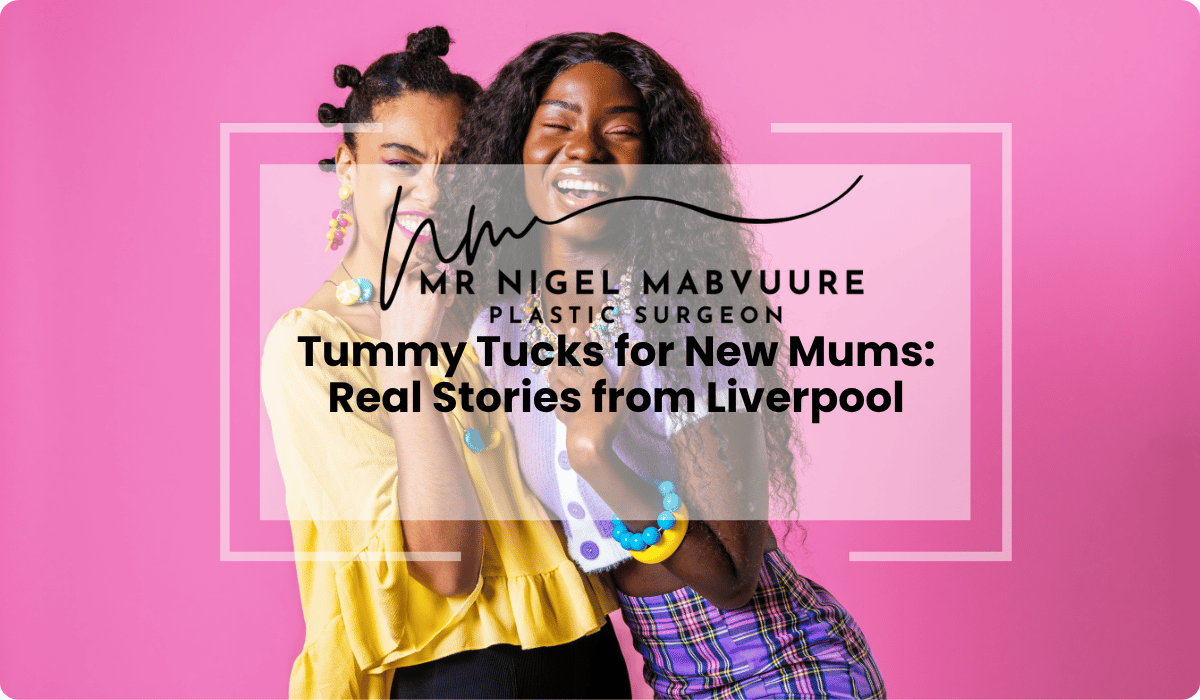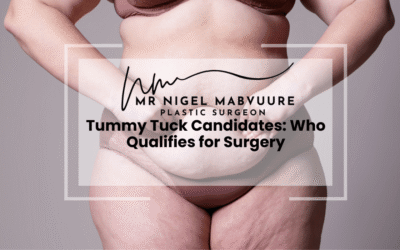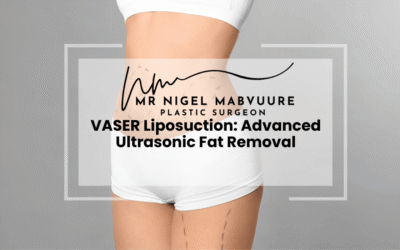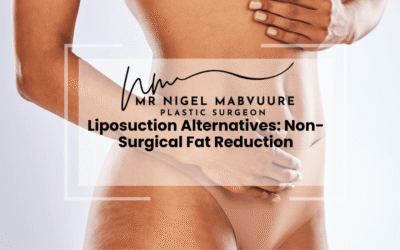Post-Pregnancy Tummy Tuck
- Post-pregnancy body changes often include separated abdominal muscles (diastasis recti) and excess skin that exercise alone cannot fix
- A “Mummy Tuck” addresses multiple concerns: removing excess skin, eliminating stubborn fat, and repairing separated muscles
- Wait at least 6-12 months after childbirth before considering surgery, and complete breastfeeding and family planning first
- Recovery typically takes 6-8 weeks for normal activities, with full results visible after 6-12 months
- Benefits include improved core strength, relief from back pain, and increased self-confidence
- Potential risks include infection, scarring, numbness, and challenges with childcare during recovery
- Choose a surgeon registered with GMC and affiliated with BAAPS or BAPRAS who specializes in post-pregnancy procedures
- Long-term success requires maintaining a stable weight and healthy lifestyle after surgery
Table of Contents
- Understanding Post-Pregnancy Body Changes: Why Mums Consider Surgery
- What is a Mummy Tuck? Procedure Explained for Liverpool Mothers
- When Can I Have a Tummy Tuck After Pregnancy? Timeline Guide
- Real Recovery Stories: Liverpool Mums Share Their Experiences
- Benefits and Risks of Post-Pregnancy Tummy Tucks
- Finding the Right Surgeon for Postnatal Surgery in Liverpool
- Life After a Mummy Tuck: What to Expect Long-Term
Understanding Post-Pregnancy Body Changes: Why Mums Consider Surgery
Pregnancy transforms a woman’s body in remarkable ways, but these changes don’t always revert completely after childbirth. For many Liverpool mothers, the post-pregnancy body becomes a new reality that can affect both physical comfort and emotional wellbeing.
During pregnancy, the abdominal muscles (rectus abdominis) often separate—a condition called diastasis recti—creating a gap that exercise alone cannot always repair. The skin stretches significantly to accommodate the growing baby, and after delivery, this stretched skin may lack the elasticity to retract fully. This commonly results in loose, sagging abdominal skin and stubborn pockets of fat resistant to diet and exercise.
Many new mothers find that despite their best efforts with nutrition and fitness regimens, their pre-pregnancy figure remains elusive. This isn’t a matter of not trying hard enough—it’s a biological reality that some changes are structural and permanent without surgical intervention.
For Liverpool mums who have completed their families, a post-pregnancy tummy tuck (abdominoplasty) offers a solution to address these specific concerns. The decision to pursue surgery is deeply personal and often comes after considerable thought about body image, physical discomfort, and quality of life considerations.
Women seeking this procedure typically report physical symptoms like back pain from weakened core muscles, skin irritation from overlapping abdominal folds, and difficulty fitting into pre-pregnancy clothing. The psychological impact can be equally significant, affecting confidence and self-image during an already challenging life transition.
What is a Mummy Tuck? Procedure Explained for Liverpool Mothers
A “Mummy Tuck,” known medically as a post-pregnancy abdominoplasty, is a specialised surgical procedure designed specifically to address the unique body changes that occur following pregnancy and childbirth. For Liverpool mothers considering this option, understanding the procedure in detail is essential.
Unlike a standard tummy tuck, a Mummy Tuck in Liverpool typically addresses multiple concerns simultaneously. The procedure comprehensively targets the entire abdominal region, focusing on three key elements: removing excess skin, eliminating stubborn fat deposits, and repairing separated abdominal muscles (diastasis recti).
The surgery begins with an incision made low on the abdomen, typically from hip to hip, positioned to be concealed beneath underwear or swimwear. Through this incision, the surgeon accesses the abdominal wall to repair and tighten the stretched or separated muscles, creating a firmer abdominal profile and stronger core. Excess skin is then removed, and the remaining skin is redraped over the newly contoured abdomen. The procedure often includes liposuction to remove persistent fat deposits, creating more harmonious body proportions.
For many Liverpool mothers, the procedure also includes umbilicoplasty—reconstruction of the navel—to ensure a natural-looking result. The entire procedure typically takes 2-4 hours under general anaesthesia, and most patients require a 1-2 night hospital stay for initial recovery and monitoring.
At Liverpool’s specialised cosmetic surgery clinics, the Mummy Tuck is often customised to address each mother’s specific concerns, whether focusing more on muscle repair, skin tightening, or overall contouring, ensuring results that align with individual expectations and anatomy.
When Can I Have a Tummy Tuck After Pregnancy? Timeline Guide
The question of timing is crucial for new mothers considering a post-pregnancy tummy tuck in Liverpool. While the desire to restore your pre-pregnancy figure may be immediate, medical professionals recommend a carefully considered timeline to ensure optimal safety and results.
Most surgeons advise waiting at least 6-12 months after childbirth before undergoing a tummy tuck procedure. This waiting period serves several important purposes. First, it allows your body to naturally recover and stabilise following pregnancy and delivery. Hormone levels need time to return to their pre-pregnancy state, and the uterus requires approximately six weeks to return to its normal size.
If you’re breastfeeding, it’s generally recommended to wait until you’ve completed this journey. Breastfeeding affects hormone levels that can impact healing and results, and the procedure itself could potentially interfere with milk production. Most surgeons suggest waiting at least 3-6 months after weaning before scheduling surgery.
Weight stabilisation is another critical factor. Your body weight should remain consistent for at least 3-6 months before surgery. Significant weight fluctuations after a tummy tuck can compromise the results, potentially creating new areas of loose skin or affecting the overall contour.
For mothers planning additional pregnancies, most Liverpool surgeons recommend postponing a tummy tuck until your family is complete. While having another pregnancy after a tummy tuck is physically possible and safe, subsequent pregnancies will likely reverse the surgical results, necessitating revision surgery.
The timeline may also depend on your individual recovery from childbirth. Complications during delivery, such as C-sections, may require additional healing time before considering elective surgery. Your surgeon will evaluate your specific circumstances, including your health history and recovery progress, to determine the optimal timing for your procedure.
Real Recovery Stories: Liverpool Mums Share Their Experiences
The journey through recovery after a tummy tuck is unique for every mother. Here, Liverpool mums candidly share their experiences, providing valuable insights for those considering the procedure.
Sarah, 34, a primary school teacher from Allerton, underwent her tummy tuck 18 months after her second child. “The first week was challenging,” she admits. “I needed help with everything—from getting out of bed to caring for my children. My husband took two weeks off work, which was essential. By week three, I was moving more comfortably, though I still couldn’t lift my toddler. After six weeks, I felt significantly better and returned to work part-time. The compression garment was uncomfortable in Liverpool’s summer heat, but absolutely worth it for my results.”
Emma, 41, from Crosby, shares a different perspective: “As a single mum, I arranged for my mother to stay with us for the first fortnight. The recovery was slower than I expected—about 10 days before I could stand fully upright. The drains were removed after five days, which made movement easier. I found sleeping in a recliner more comfortable than a bed for nearly three weeks. By month three, I felt completely back to normal, though numbness around my scar lasted longer.”
For Lisa, 38, from Woolton, emotional recovery was as significant as physical healing. “I wasn’t prepared for the emotional rollercoaster. The initial swelling made me question my decision, but as it subsided, I began seeing the changes. Six months post-surgery, I’m thrilled with my results. My advice to Liverpool mums considering this is to prepare mentally for a recovery that has ups and downs.”
Many Liverpool mothers emphasised the importance of following post-operative instructions meticulously. Rebecca, 36, notes: “My surgeon was very specific about activity restrictions, and following them precisely made a difference. Friends who rushed their recovery ended up with complications I avoided.”
These real experiences highlight that while recovery timelines vary, most Liverpool mums found the temporary discomfort worthwhile for the long-term improvements in both physical comfort and confidence.
Benefits and Risks of Post-Pregnancy Tummy Tucks
For Liverpool mothers considering a post-pregnancy tummy tuck, understanding both the potential benefits and risks is essential for making an informed decision about this significant procedure.
Benefits
The physical benefits of a post-pregnancy tummy tuck extend beyond cosmetic improvements. Many mothers experience relief from functional issues that developed after childbirth. The repair of diastasis recti (separated abdominal muscles) can significantly improve core strength, potentially alleviating lower back pain that many women suffer following pregnancy. The procedure also removes excess skin that may cause hygiene issues, skin irritation, or rashes in the abdominal folds.
From an aesthetic perspective, the surgery can dramatically restore abdominal contours by removing stretched skin and stubborn fat deposits resistant to diet and exercise. The procedure often includes repair of stretched or protruding navels, creating a more natural appearance. For many Liverpool mothers, these physical changes translate to improved clothing options and greater comfort in everyday activities.
Psychologically, many women report increased self-confidence and improved body image following recovery. This emotional benefit shouldn’t be underestimated, as it can positively impact relationships, social interactions, and overall quality of life.
Risks
As with any surgical procedure, tummy tucks carry potential risks that must be carefully considered. General surgical risks include infection, bleeding, adverse reactions to anaesthesia, and blood clots. Specific to abdominoplasty are risks of seroma (fluid accumulation), poor wound healing, asymmetry, and unfavourable scarring.
Some patients experience temporary or permanent numbness in the abdominal area due to nerve damage during surgery. While rare, revision surgeries may be necessary if complications occur or if the aesthetic outcome doesn’t meet expectations.
For new mothers specifically, consideration must be given to the physical demands of caring for young children during recovery. Lifting restrictions (typically nothing heavier than 5kg for six weeks) can present significant challenges when caring for infants or toddlers.
The procedure is also a significant financial investment, with costs in Liverpool typically ranging from £6,000 to £9,000 depending on the extent of the surgery and the surgeon’s expertise. As an elective cosmetic procedure, it’s rarely covered by the NHS unless there are significant medical complications from pregnancy.
Finding the Right Surgeon for Postnatal Surgery in Liverpool
Selecting the right surgeon for your postnatal surgery in Liverpool is perhaps the most crucial decision in your tummy tuck journey. The expertise and approach of your chosen surgeon will significantly impact both your safety and satisfaction with the results.
Begin your search by verifying credentials and specialisation. In Liverpool, look for surgeons who are registered with the General Medical Council (GMC) and hold membership with the British Association of Aesthetic Plastic Surgeons (BAAPS) or the British Association of Plastic, Reconstructive and Aesthetic Surgeons (BAPRAS). These affiliations indicate adherence to strict ethical and professional standards. Importantly, seek surgeons who specifically specialise in post-pregnancy body contouring, as they will have the most relevant experience with the unique challenges of postnatal anatomy.
Experience matters significantly. During consultations, don’t hesitate to ask potential surgeons about their specific experience with post-pregnancy tummy tucks, including how many procedures they perform annually. Request to see before-and-after photographs of previous patients with similar body types and concerns to yours. The most qualified Liverpool surgeons will have extensive portfolios demonstrating consistent results.
The consultation process itself reveals much about a surgeon’s approach. A thorough consultation should include a detailed discussion of your medical history, previous pregnancies, and future family plans. The surgeon should perform a physical examination to assess your abdominal muscles, skin elasticity, and overall anatomy. Be wary of practitioners who promise unrealistic results or minimise the recovery process.
Liverpool offers several reputable clinics specialising in postnatal surgery. Consider factors beyond the surgeon alone, including the facility’s accreditation, the qualifications of the supporting medical team, and the comprehensiveness of aftercare services. Many Liverpool mothers recommend choosing facilities that offer dedicated post-operative support, including regular follow-up appointments and access to nursing staff for questions during recovery.
Finally, trust your instincts about communication and rapport. The ideal surgeon will listen attentively to your concerns, answer questions clearly without dismissing any as trivial, and demonstrate genuine interest in helping you achieve your goals safely. This relationship will continue through your recovery period, so establishing good communication from the start is essential.
Life After a Mummy Tuck: What to Expect Long-Term
For Liverpool mothers considering a mummy tuck, understanding the long-term implications beyond the initial recovery period provides valuable perspective. While the immediate results are often dramatic, how these results evolve over time and integrate into daily life deserves careful consideration.
The final aesthetic results of a mummy tuck typically emerge gradually. While initial improvements are visible immediately after surgery, residual swelling can persist for 3-6 months. The complete settling of tissues and scars may take up to a year. Most Liverpool mothers report that their abdominal contour continues to improve during this time, with scars fading significantly, though rarely disappearing completely. The surgical scar, while permanent, is strategically placed low on the abdomen to remain hidden beneath underwear and swimwear.
Maintaining results requires commitment to a healthy lifestyle. While the removed fat cells and excess skin won’t return, significant weight fluctuations can affect the overall appearance. Many Liverpool mums find that their tummy tuck serves as motivation to sustain healthy habits, including regular exercise and balanced nutrition. The repaired abdominal muscles provide improved core strength, which many women leverage to develop more effective fitness routines.
The psychological impact often extends well beyond the physical changes. Liverpool mothers frequently report lasting improvements in self-confidence that positively influence various aspects of life—from intimate relationships to professional settings. Many describe feeling reconnected with their pre-pregnancy identity while embracing their role as mothers.
Practical considerations include changes to wardrobe and physical activities. Most women find they can wear styles previously avoided, including fitted clothing and two-piece swimwear. Physical activities often become more comfortable, with many reporting improved posture and reduced back pain during extended periods of standing or walking.
Future pregnancies remain possible after a mummy tuck, though most surgeons advise completing your family before undergoing the procedure. Subsequent pregnancies won’t create health risks but will likely reverse many of the surgical benefits, potentially necessitating revision surgery.
For most Liverpool mothers who choose this procedure, the mummy tuck represents not merely a cosmetic change but a reclamation of physical comfort and confidence after the transformative journey of motherhood.
Frequently Asked Questions
How much does a mummy tuck cost in Liverpool?
A post-pregnancy tummy tuck in Liverpool typically costs between £6,000 and £9,000. The exact price depends on several factors including the surgeon’s expertise, the extent of the procedure required, facility fees, and whether additional procedures like liposuction are included. Most clinics offer consultation fees between £100-£200, which may be deducted from the final surgery cost if you proceed. Payment plans are available at many Liverpool clinics to help manage this investment.
How painful is recovery from a mummy tuck?
Recovery from a mummy tuck involves moderate to significant discomfort, particularly during the first 1-2 weeks. Pain is typically most intense in the first 3-5 days and gradually improves thereafter. Most patients describe a feeling of tightness rather than sharp pain. Pain management typically includes prescription medication for the first week, transitioning to over-the-counter options. The hunched-over walking position required initially can cause back discomfort. Most Liverpool mothers report that pain substantially decreases after 2 weeks, with mild discomfort continuing for 4-6 weeks.
Will a tummy tuck fix diastasis recti after pregnancy?
Yes, a tummy tuck is currently the only effective treatment to fully repair diastasis recti (separated abdominal muscles) after pregnancy. During the procedure, the surgeon will suture the separated rectus abdominis muscles back together, restoring core strength and creating a flatter abdominal profile. While physical therapy and specific exercises can improve the condition slightly, they cannot completely close significant gaps in the abdominal wall. The muscle repair performed during a tummy tuck provides both cosmetic improvement and functional benefits like better posture and reduced back pain.
How long will I need help with childcare after a mummy tuck?
You will need consistent help with childcare for at least 2-3 weeks following a mummy tuck. During the first week, you’ll require nearly full-time assistance as you’ll be unable to lift anything heavier than a mobile phone. For weeks 2-3, you’ll still need significant help, especially with lifting children, bathing them, or carrying them upstairs. Lifting restrictions (nothing over 5kg) typically remain in place for 6 weeks, meaning assistance with toddlers and younger children is necessary throughout this period. Many Liverpool mothers arrange for family support or professional childcare during recovery.
Can I have a mummy tuck if I’m planning another pregnancy?
While it’s physically possible to have a mummy tuck before another pregnancy, most surgeons strongly recommend waiting until you’ve completed your family. Subsequent pregnancies will stretch the abdominal muscles and skin again, potentially reversing the surgical results and necessitating a second procedure. The repaired muscles can safely expand during another pregnancy without causing health concerns, but the aesthetic benefits of the surgery will likely be compromised. If you’re uncertain about future pregnancies, most Liverpool surgeons advise postponing the procedure.
Will the NHS cover my post-pregnancy tummy tuck in Liverpool?
The NHS rarely covers post-pregnancy tummy tucks as they’re considered cosmetic procedures. However, exceptions exist in specific medical circumstances. You might qualify for NHS coverage if you experience significant functional problems from excess skin (such as chronic rashes or infections), have substantial weight loss following pregnancy, or suffer from severe diastasis recti causing documented medical issues like chronic back pain. The approval process is stringent and varies by local NHS trust in Liverpool. Most post-pregnancy tummy tucks are performed privately, with patients covering the full cost.




